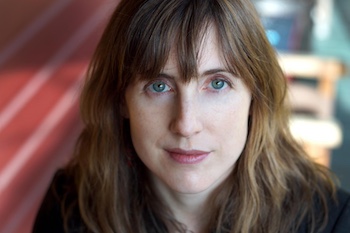Estimated reading time: 4 minutes

Dystopian fiction seeks to illuminate the consequences of the bad choices we make today. Goodhouse follows in this tradition by extrapolating into the late 21st Century one of America’s most troublesome present-day realities. It satirizes our counterproductive criminal justice system, which does a great job training young people for lives of crime. As author Peyton Marshall reveals in the acknowledgments, she modeled the “Goodhouse” where most of the action takes place in her novel on the notorious Preston Youth Correctional Facility, a juvenile rehabilitation center closed by the State of California only in 2011. The book is a great example of dystopian fiction.
A nationwide network of criminal breeding-grounds
In Peyton Marshall’s dark-hued future America, the country is engaged in an endless war overseas while on the brink of civil war at home. On one side are the officials who maintain the nationwide network of Goodhouses. There, young men tagged as having genetically-determined criiminal tendencies are raised from an early age in draconian conditions sure to bring out the worst in them. (“There was no Goodhouse equivalent for girls. The same markers in women were not predictive of criminal behavior . . .”) On the other side are the revolutionary Zeros, who stage massive attacks to annihilate the Goodhouses and all those who live within them because “[t]hey wanted to purify, to cleanse. They didn’t believe in reforming us.”
Goodhouse by Peyton Marshall (2014) 337 pages ★★★★☆

A hauntingly familiar environment
The novel tells the story of “James Goodhouse,” But that’s not his name. The system has suppressed his birth name and origins like those of all his thousands of fellows. And so too is the trajectory he follows from the equivalent of a low-security youth facility where he was a model citizen to what can only be described as a prison. The Goodhouse shelters a totalitarian mini-society where James is physically and psychologically abused by the former inmates now in positions of power over him.
Does any of this sound familiar? It should. Most of America’s prisons operate just like this today.
When James receives a rare opportunity to leave the Goodhouse for a day, he meets Bethany. She is a gravely ill young woman who lives with her mother outside the walls in a home that represents an idyllic world for him. Their awkward relationship unfolds as the Goodhouse staff increasingly dehumanizes him. Meanwhile, the violent clash between the system and the Zeros gathers force.
Goodhouse works—as a cautionary tale, a novel of suspense, and a compelling read. It’s a terrific example of dystopian fiction.
About the author

Peyton Marshall is a graduate of Reed College and the Iowa Writers’ Workshop. She received a National Endowment for the Arts Fellowship for 2022-23. As Google Books notes, “Goodhouse is partly inspired by her research into the Preston School of Industry, a juvenile reform school founded in California in 1890. Its aim was to elevate the minds of young offenders and provide them with job skills that would keep them out of adult prison. The memoirs of former studens evidence a much more brutal experience.” Marshall lives in Oregon with her husband, who is also a writer.
For related reading
For more good reading, check out:
- These novels won both Hugo and Nebula Awards
- The ultimate guide to the all-time best science fiction novels
- 10 top science fiction novels
- The top 10 dystopian novels
- 10 new science fiction authors worth reading now
You might also check out Top 10 great popular novels.
And you can always find my most popular reviews, and the most recent ones, on the Home Page.


























